Plane, bus, train, bicycle, coco-taxi, classic car or shared taxi… you name it and you can probably ride it in Cuba. Goats on the Road share their essential tips on getting around Cuba.
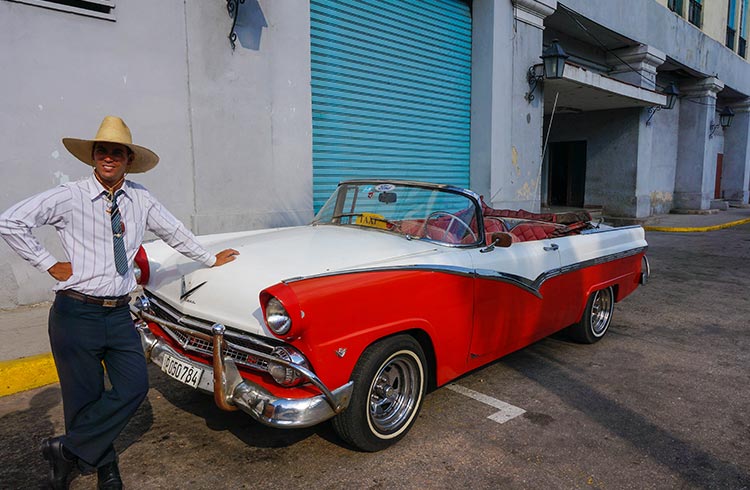 Photo © Goats on the Road
Photo © Goats on the Road
Getting to Cuba
For most travelers, you can use “tourism” as your reason for traveling to Cuba, and you don’t need to fill out any visa forms, just a straightforward Tourist Card which can usually be purchased at a Cuban Consulate, through a travel agent, or at some airports before boarding your plane to Cuba.
For US citizens, traveling to Cuba for tourist reasons is currently prohibited. But travel is allowed if it falls under one of these 12 categories, which include "support for the Cuban people." A tourist card will also be necessary for US visitors.
Flights
If you are making bookings via a trusted travel agent who is experienced in picking the best direct flights, they can help find a flight with the simplest route to get you to Havana. Finding flights that fly directly from wherever you are in the world to Cuba without the help of an expert can be tricky, but it's not impossible.
Insurance
You will also need to have travel insurance in order to be allowed to enter into Cuba. If you arrive and you don’t have proof of travel insurance, you can purchase from the local provider, Asistur, at the airport, but it may not be adequate for your needs. Some airlines will include the cost of Asistur travel insurance for Cuba in the price of the ticket.
Make sure to get insurance coverage before you leave for Cuba.
Renting cars in Cuba
Having your own wheels to explore a destination is something we generally encourage. Being able to pull over where you want to, take that random road if you feel like it, and get off the beaten path – it’s what travel is all about.
Unfortunately, in Cuba it costs quite a bit to rent a car – around US $80 per day, and because rentals are government-run, they are the same price all around the country. And bear in mind, if you're involved in an accident, you may be prevented from leaving the country until all legal proceedings and claims associated with the accident are settled.
A cheaper option is to rent a scooter or three-wheeled motorbike for $30-60 a day. You may need an international drivers license, and helmets are mandatory (as well as a really good idea).
Viñales is a great spot to have a motorbike. You can head out to the San Tomas Cave, drive somewhere for sunset, or venture off on the two-hour trip to Cayo Jutias, a beautiful nearby beach.
You can also hire a driver for the day, or for an hour or so, to take you around in one of Cuba’s famous classic cars.
Transport options in Cuba
For tourists, the most common form of inter-city transportation is the bus. Viazul is the tourist bus on offer and it’s actually quite decent. In my experience, the bus runs on time and was clean and comfortable. They make various stops along the way for travelers to get some lunch and take a look around, but pack some snacks for the drive in case you get peckish.
You can purchase your Viazul bus tickets at the bus station, or check with an Infotur office. Bus tickets sell out fast during peak season, so book online prior to arriving in Cuba to avoid disappointment when you get to the bus station and they don't have space on the bus.
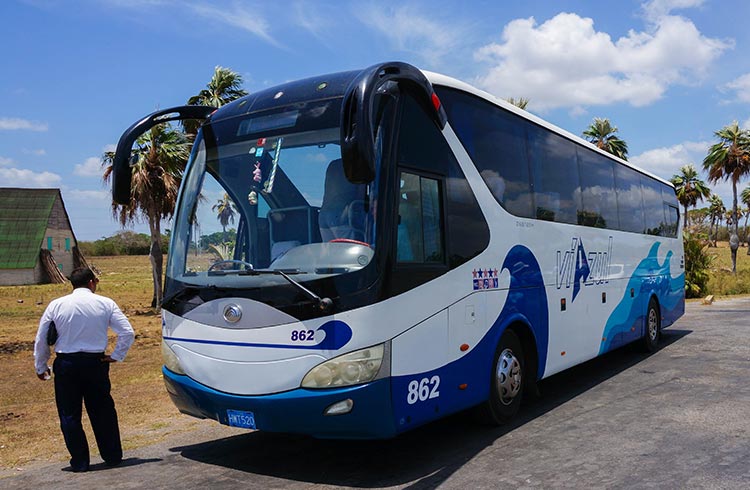
Some example journeys and costs:
- Havana to Viñales: US $13
- Viñales to Cienfuegos: US $35
- Cienfuegos to Trinidad: US $6.50
- Trinidad to Camagüey: $15
Another option for traveling between cities is a shared car. These can be arranged at Infotur offices, and at your casa.
It’s basically just a normal car or van that can fit about five people. You’ll be picked up at your casa, and dropped off at the next one. Door to door service!
The cost is more than the bus but considerably less than a private taxi. For example: from Havana to Viñales, expect to pay around $30.
Local buses
Local buses are always very full, but are very cheap (US $0.05), paid for using CUP. Some travelers have reported saying that when they turn up to the local bus depot, locals pretend the buses aren't running, forcing travelers to catch the more expensive option. If you speak great Spanish, you might get around this barrier, but do be aware some locals don't want travelers onboard their local bus services.
Coco taxis
In Havana, there are round tricycles that resemble a yellow coconut. This is a very gimmicky way to get around, but fun nonetheless. Beware of inflated prices – many coco taxi drivers try to charge travelers a large fee for a short ride. Try to agree on a price before you get in.
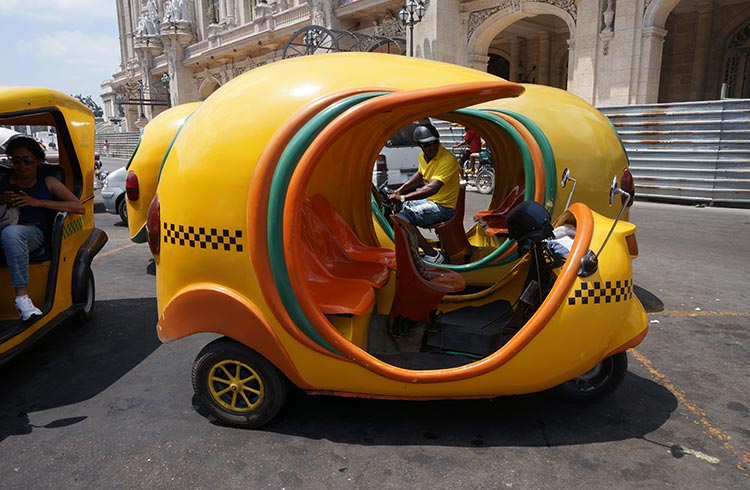
Hop-on/hop-off bus
In Havana, you can jump on this bus at Parque Central and take a tour around the city.
We suggest getting on at Parque Central and hopping off at Playas del Este beach, which is 20 min outside of the city.
Collectivos
Collectivo cars run on set routes around the major cities. Tell your casa or hotel your destination and they should be able to help you with what number of collectivo to take and how much the price should be.
The cost is typically very low at US $0.50-$1 per ride. Paid with CUP currency.
Bicycle taxis
This manpowered mode of transport is affordable and good for a quick ride.
Taxi
Old cars are used as taxis in Cuba – whether it’s for an intercity trip, or a local journey, you can find yourself in a car that’s much older than you are.
Classic cars
This is the most tourisy way to get around. Tour rides in a shiny car are about two hours and cost US $55-70 or so.
Trains
There are some old locomotive trains putting around Cuba, but for the most part, you have to be pretty patient to be a train traveler on this Caribbean-paced island. They are somewhat infrequent (running every two to three days), and even then are often delayed.
Even though there have been improvements to fuel supply and the rail fleet, the trains are still often unreliable and not the most comfortable, so most travelers opt for planes, buses, cars, and taxis.
Hitchhiking in Cuba
Hitchhiking is almost a form of public transport in Cuba: It is legal, free and safe. You will see lots of people lining the streets and highway trying to catch a ride - join them by sticking your thumb out.
Walking around Cuba
Don't forget the cheapest transport out there: walking. Get a feel for Cuba's sights, sounds and smells, wandering through streets with fruit and vegetable vendors, cafes and people watching the world go by from their doorways. Best of all, it's free. Download an offline map before arriving in Cuba to help you navigate the streets.
Enjoy the ride
Cuba has some of the most interesting transportation options in the world. From classic cars to coco taxis, it’s always an experience getting around. While Viazul buses do run on a pretty reliable schedule, it’s always worth keeping in mind that you’re in the Caribbean. Things may not run like you expect back home, so keep a relaxed attitude and enjoy the ride.
Prices updated in Aug 2023.
Related articles
Simple and flexible travel insurance
You can buy at home or while traveling, and claim online from anywhere in the world. With 150+ adventure activities covered and 24/7 emergency assistance.
Get a quote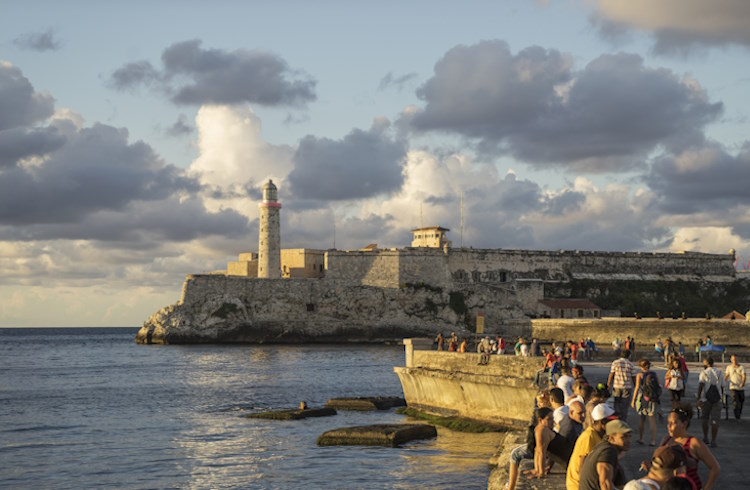

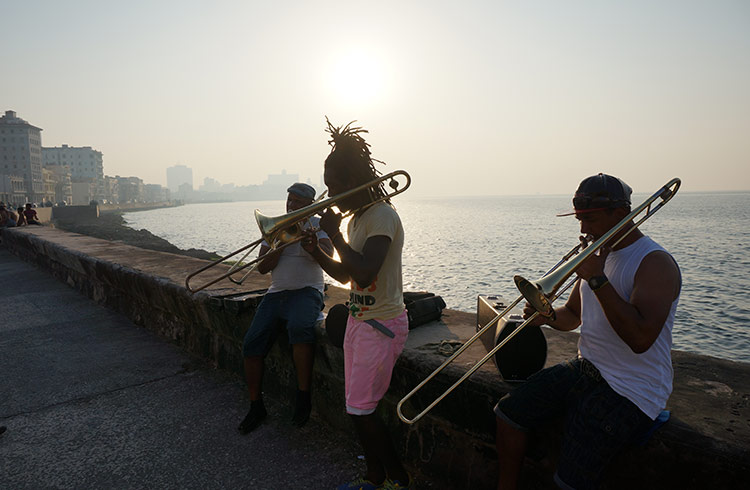
3 Comments
Very helpful
Extremely Helpful.
Hi there 🙂
Good post!
My wife and I are considering going to Cuba for two weeks and visiting Vinales and Trinidad is a must 🙂
We have researched on the Internet and we already have an idea of how much we are going to spend and the truth is that it does not seem so expensive, in terms of accommodation and food, but what does seem expensive is transportation 🙁 We have found out and the bus from Havana to Vinales costs only $ 10 USD 🙂 but the tour lasts about 4 hours which is a long time, on the other hand, collective taxis … mmmhhh we have seen videos on youtube and they really seem very uncomfortable. We prefer to pay a taxi or a private tour, although the initial idea is to spend 3 days in Vinales to get to know it thoroughly, we can adjust our itinerary.
After a thorough investigation we have found a tour and transfer provider that seems quite professional and with reasonable prices:
https://www.havana60.com/havana-to-vinales-taxi/
I wonder if you have ever used it or have you heard of them? Do you have any recommendations you can offer us?
Many thanks,
John and Wika